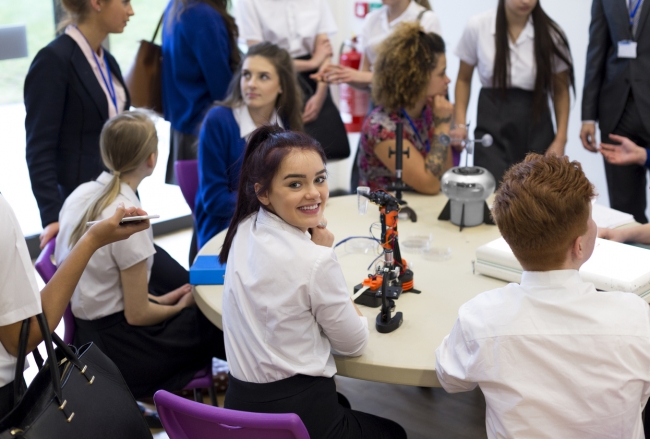3 minute read - 25th April 2024
Concerns for future workforce as girls turn off from engineering and science
A stark gender gap in young people’s interest in engineering and science and a sharp decline in practical science have been identified through a new survey by the Royal Society in partnership with EngineeringUK, with support from Wellcome.
The third Science Education Tracker (previously run in 2016 and 2019) included specific questions about engineering for the first time in this 2023 survey. The tracker looked at the responses of 7,000 young people regarding their attitudes to and experience of science education and careers. The results make worrying reading given current and projected future workforce shortages across engineering and technology.
Most school students see engineering careers as creative and versatile, and over half of young people believe they could become an engineer if they wanted to. However, interest in engineering careers drops as students progress through school (55% of year 7 students compared to 39% of students in year 13). For those not interested in a STEM (science, technology, engineering and maths) career, girls are more likely than boys to say this is because they don’t enjoy the subjects (57% vs 41%) and that they don’t feel they are good at them (38% vs 20%).

A survey conducted by EngineeringUK and the Royal Society has shown a stark gender gap in young people’s interest in engineering and science / Picture: Getty/iStock
Across all age groups, boys report much higher knowledge of engineering careers than girls and are more likely to say engineering is something for them. Only 12% of girls say being an engineer fits well with who they are compared to 38% of boys. And just 16% of girls think a career in engineering is suitable for someone like them, this is up at 44% of boys.
Doing practical science is the key motivator to learning science (52% of year 7 to 9 students), with girls statistically more likely to say this. Yet, opportunities for hands-on practicals are in decline in school, with only 26% of GCSE students doing practical work at least once a fortnight. 70% of students across secondary schools say they want to do more and the appetite for more practical work is higher among students who are generally less engaged with science. This includes students who say they aren’t interested in science or who see science as ‘not for me’. 32% of young people in years 7 to 13 are in the ‘not for me’ group and this group is more likely to include girls. Indeed, 36% of girls say science is not for them.
Extra-curricular activities boost young people’s interest in continuing their STEM education. Half of students who visited a business said they were inspired to continue with STEM subjects and 45% of those who had a talk at school from someone working in STEM said the same. Yet just 43% of students had STEM extra-curricular activities in the previous year. STEM related work experience is also very low. 15% of young students had done a STEM related work experience, with a further 26% keen to do so but unable to secure a placement.

Only 12% of girls say being an engineer fits well with who they are and just 16% of girls think an engineering career is suitable for them / Picture: Getty/iStock
Dr Hilary Leevers, chief executive of EngineeringUK, said: “We need hundreds of thousands more people entering STEM careers to get on track to meet net zero, to improve sustainability, and for the UK to prosper. The findings of the tracker are a serious wake-up call. We need to do more to keep young people interested in STEM as they progress through school and build their understanding of the opportunities available to them. Government must work on ways to ensure the teaching of science, maths and computer science is more engaging for all students and builds confidence in the subjects, particularly for girls. We must also ensure that all students have careers experiences that highlight opportunities in areas like engineering, that are barely visible in the current curriculum.
“The engineering community also needs to step-up and help young people see the range of opportunities for them in engineering and technology. We can inspire them and encourage them to continue with STEM. Where possible we should also be helping to offset the decline in practical lessons by offering hands-on activities.”
Download the Science Education Tracker report below:
